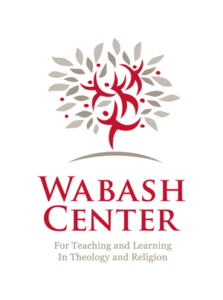assessing learning
Select an item by clicking its checkbox
Eric D. Barreto It’s that time of the semester when fine weather and the end of an academic term meld into one lovely concoction of hopeful anticipation. After a long winter, I am relishing the open windows and the warm sunlight. After a long academic year, the promise of ...
When I signed up to teach the Bible and Race in the USA, I didn’t know that my students would be able to live stream the lynching of Eric Garner and Tamir Rice. No one told me that modern courtrooms would accept a testimony from one who could liken ...

A Concise Guide to Improving Student Learning: Six Evidence-Based Principles and How to Apply Them
Date Reviewed: March 26, 2015
The authors of this brief resource provide educators with six of the most important principles to emerge from recent research on human learning. Taken together, these principles provide the elements of a framework for effective constructivist pedagogy, particularly in higher education:
- Desirable difficulties increase long-term retention (5-7)
- Meaningful and spaced repetition increases retention (12-13)
- Emotion and relevance deepen learning (15-16)
- Multisensory instruction deepens learning (25-26)
- Small groups engage students (32-33)
- Formative assessment or low-stakes evaluation strengthens retention (43-46)
The authors offer a series of concrete “instructional applications” as well as an annotated summary of a few of the most salient research studies relevant to each principle. Interleaved with their treatment of the principles, concrete applications, and annotated bibliographies, the authors provide outlines of workshop sessions that address specific instructional techniques funded by the various principles under discussion. The main body of this highly practical book ends at page 60. Three appendices (on course design, lectures, and class discussions) bring the book to page 78. The final quarter of the book is taken up with extensive bibliographic references.
The book has several strengths. It harvests a burgeoning body of literature on human learning in a highly accessible manner. It backs up its claims with relevant research. Specific instructional techniques and ideas that have solid grounding in empirical research on learning are also offered. Ample bibliographical references appear at every turn. Useful guidelines for improving student learning positively emerge from the book.
The weaknesses of the book arise from its strengths. The authors’ treatment of the six principles, while insightful, come across as thin. Explicating and unpacking each principle in five or six pages as opposed to the one or two pages given to the task in the book would have aided the process of internalizing the concepts involved. The practical applications in each section have a great deal of merit, but the added interspersed workshop materials make the book somewhat difficult to follow. I would have preferred a less cluttered organizational structure. While I appreciate the authors’ intentions to offer a clear, pithy, and brief resource for faculty who want to make the shift toward more learning-centered pedagogy, the book as a whole comes across as a series of edited outlines for in-service presentations at faculty meetings. A lot less bibliographical material and a lot more explanation of key concepts would likely help the newcomer to discover the way of thinking about learning and teaching advocated in the book.
This book might serve as a useful resource for faculty members who want to move away from the traditional orientation of the “sage on the stage” who suffers from “content tyranny” and toward a more engaged pedagogy, but only for those motivated by the books’ remarkable brevity. It would work well as a brief introduction for doctoral students who have to take a required course on teaching in higher education. It also could work well for faculty who already know this material and who want to have a quick summary at their fingertips when designing syllabi or who have the opportunity to teach other teachers how to teach effectively. In order to go beyond preaching to the already initiated, it would probably need further development and revision.

Connecting Learning Across the Institution (New Directions for Higher Education, Number 165)
Date Reviewed: February 26, 2015
Through a framework of three segments that set educational context, demonstrate integration, and provide planning models, Pamela L. Eddy’s edited volume of essays explores the question of learning across the institution by framing research around questions that consider stakeholders, institutional populations, and applicability of theoretical approaches to learning. Offering both a scholarly focus and practical applicability, this volume brings together and advances the way faculty think about learning, it highlights the common features that stakeholders share, and presents insight about how to support faculty learning and development.
In the initial section, “Setting the Context,” Barber’s essay “Integration of Learning Model: How College Students Integrate Learning” provides a helpful introduction to the study of integrated learning for undergraduate student populations. He identifies the issues contemporary students face – compartmentalization, expanding digital tools, lack of reflection – and urges faculty to develop a theory of learning that is both intentional and explicit in its awareness of these issues and mindful of the shifting demographics of the undergraduate. Further challenges to faculty vision are suggested by Eddy’s “Faculty as Border Crossers,” whose analysis of Fulbright faculty reveals that faculty are forced to confront their assumptions about teaching and learning in light of direct exposure to new environments, which can include language, systems, space, or values. Closer to home, Moor and Mendez’s “Civic Engagement and Organizational Learning Strategies for Student Success” proposes that a deliberate approach to cultivation of civic values both inside and outside the classroom holds great potential for integrated learning and student success.
After Leslie’s chapter on stakeholder impressions and demands regarding learning and assessment, Wawryznski and Baldwin’s essay encourages academic leaders (beginning with chief academic officers) to model and promote (both in and outside of the classroom) the types of “high-impact practices” that make for a holistic approach to higher education. Zakrajsek’s “Developing Learning in Faculty: Seeking Expert Assistance from Colleagues,” encourages a return among faculty to the types of learning cultures that are formulated within a graduate experience. In addition to seeking feedback regarding classroom teaching, Zakrajsek reminds the reader that disciplinary expertise aside, an interprofessional approach to the academic culture is recommended for both student and professorial success. The concluding essay in the second section, VanDerLinden’s “Blended Learning as Transformational Institutional Learning,” encourages thoughtful consideration of hybrid course models that include critical reflection at multiple levels in order to achieve the greatest level of success: student, professorial, and institutional.
The final portion of this collection addresses consequences of the theories and practices outlined thus far. While authors Amey, Neumann, and Bolitzer propose organizational frameworks and strategies, Chance identifies connections and key issues that bring all of the groups identified in this volume into conversation with one another.
The notion that faculty must scaffold disciplinary content with institutional and civic values is growing increasingly common. Irrespective of Fulbright activity, more and more faculty are being challenged to be “border crossers” within their field and across the campus. This volume of essays provides an excellent start to considering both the theoretical and the practical elements and implications of these shifts in higher education in North America.
In my last post, I advocated for open source final exams, which focused on one’s ability to sort through the mass of information readily available on an iPhone. The response to that post was overwhelming, so I offer a follow-up conversation. Below I have paraphrased some of the more ...


